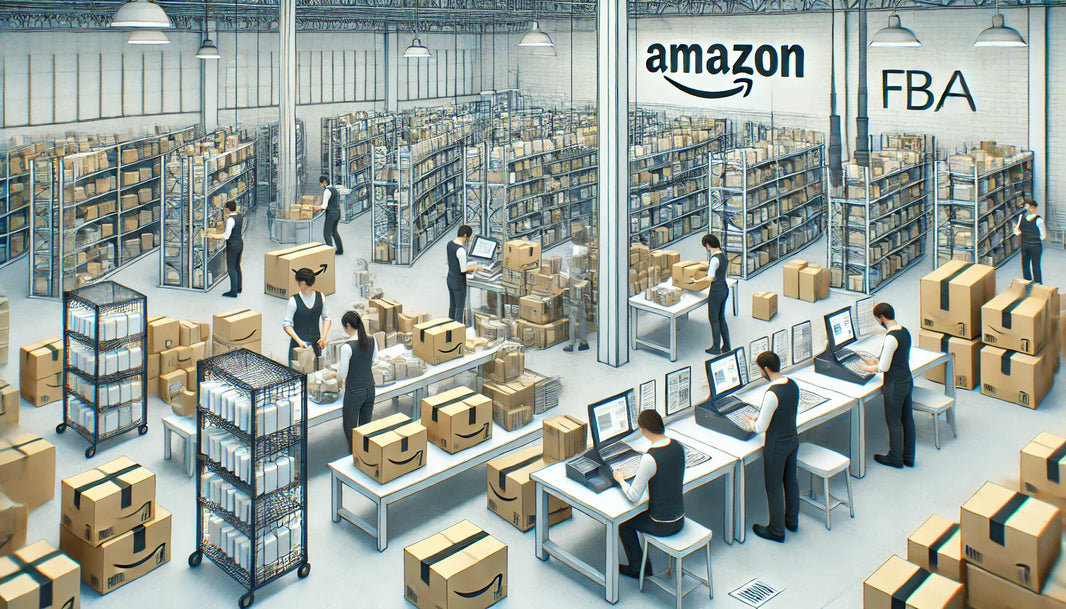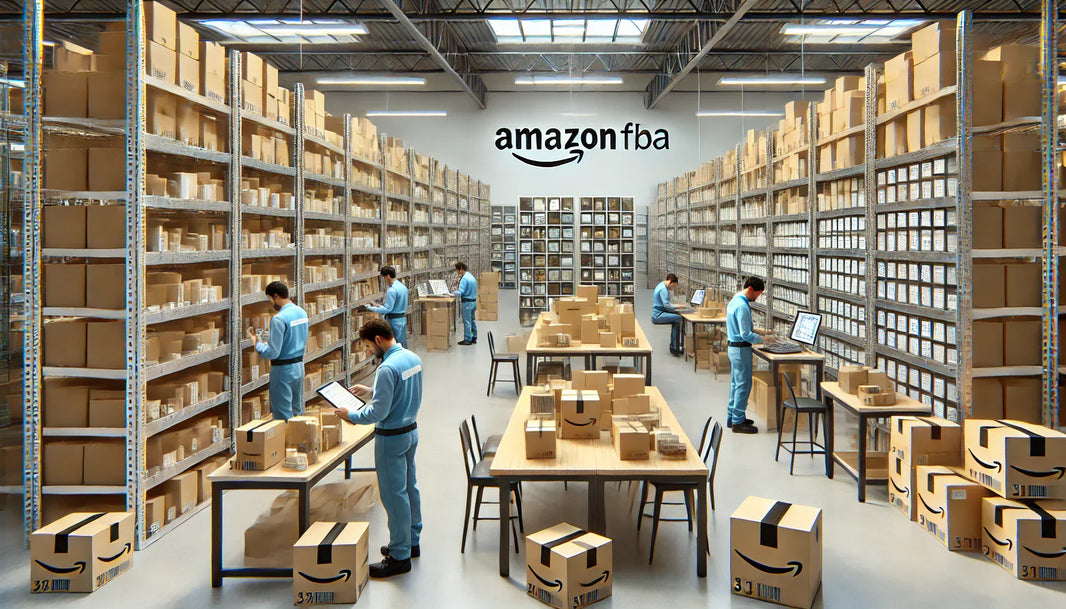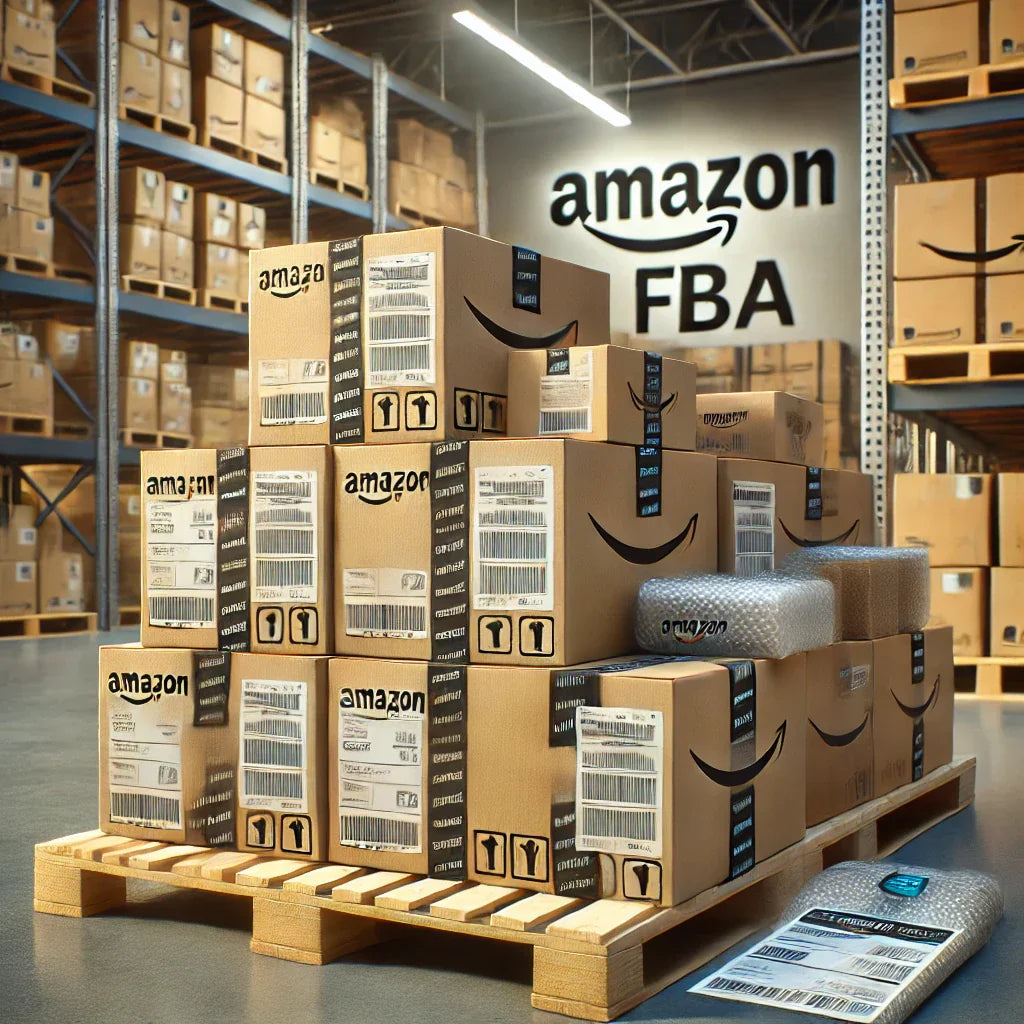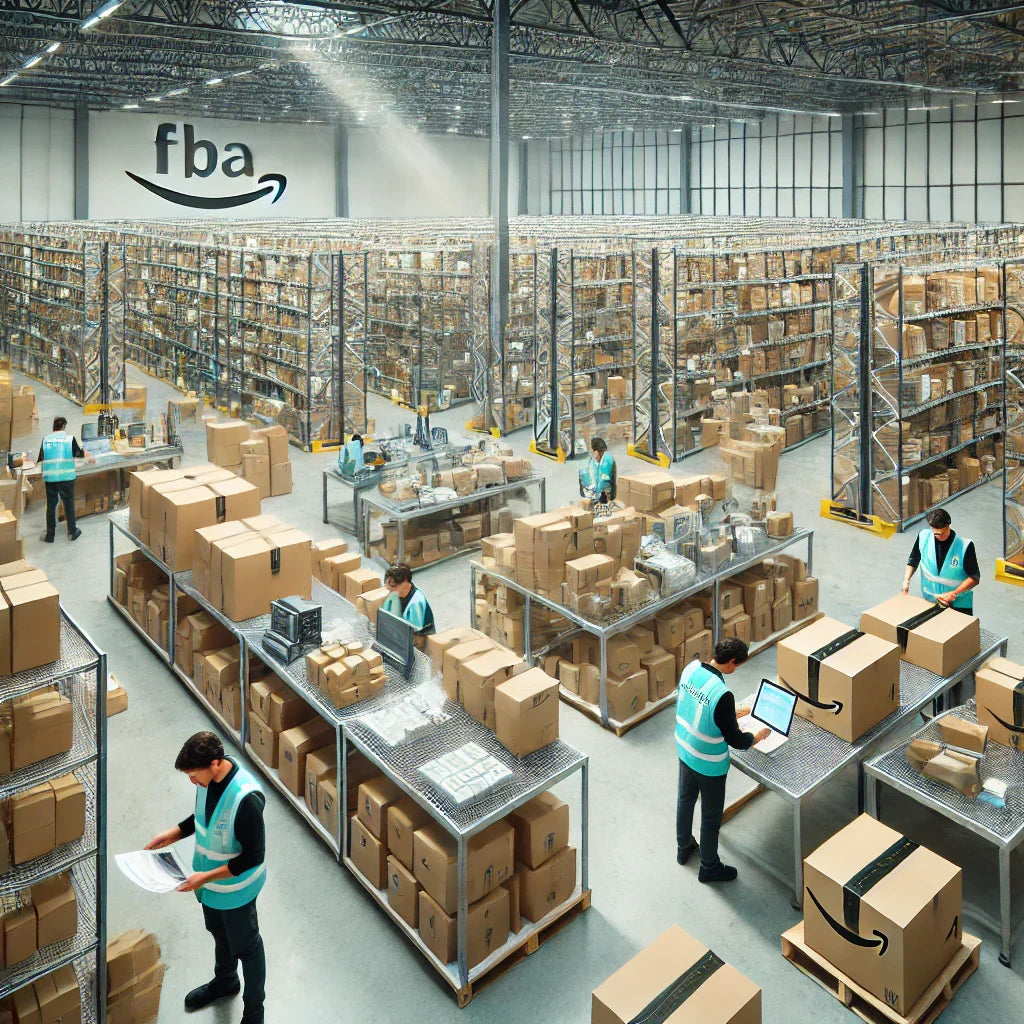In today's world, sustainability is more than a trend; it’s a critical business imperative. Warehousing, a key component of the global supply chain, has a significant environmental footprint, often consuming large amounts of energy and resources. However, with mindful practices and strategic adjustments, warehousing operations can drastically reduce their environmental impact, contributing to a greener, more sustainable future. This article will explore actionable steps and effective strategies for creating an eco-friendly warehouse, from energy-efficient technologies to waste reduction and green logistics practices. Discover how implementing sustainable warehousing practices not only benefits the planet but also enhances operational efficiency, lowers costs, and strengthens a brand’s reputation in an increasingly eco-conscious market.

Understanding the Environmental Impact of Warehousing
Warehousing serves as a critical hub for goods storage and distribution, yet it also represents a significant source of energy consumption and carbon emissions. From lighting and heating to the transportation and disposal of materials, traditional warehousing practices contribute heavily to environmental degradation. Key areas that add to the environmental footprint in warehousing include:
- Energy Use: Warehouses require substantial electricity to power lighting, heating, cooling, and automation systems.
- Material Waste: Excess packaging and improper disposal practices can generate large amounts of waste.
- Carbon Emissions: Transportation activities, both inbound and outbound, significantly contribute to greenhouse gas emissions.
- Water Usage: Water is essential in many warehouse functions, including sanitation, landscaping, and cooling systems, adding to resource depletion.
With a deep understanding of these impacts, companies can prioritize sustainability in warehousing by tackling each area systematically.
1. Embracing Energy-Efficient Warehouse Design
Reducing energy consumption is a key step toward sustainable warehousing. By optimizing the warehouse design, companies can lower operational costs and reduce greenhouse gas emissions. Here are strategies to implement energy efficiency in warehouse design:
A. Leverage Natural Lighting
Maximizing the use of natural light reduces dependence on artificial lighting. Skylights, large windows, and light tubes can illuminate spaces naturally, saving electricity and creating a more pleasant working environment.
B. Install LED Lighting Systems
LED lighting is both energy-efficient and long-lasting. LEDs consume less power than traditional bulbs, reducing both energy bills and replacement costs. Additionally, integrating sensor-based lighting systems ensures lights are only on when needed, further conserving energy.
C. Optimize HVAC Systems
Heating, ventilation, and air conditioning (HVAC) systems are major energy consumers in warehousing. Energy-efficient HVAC units, combined with strategic insulation and regular maintenance, help regulate temperature while minimizing energy use. Advanced systems can even adjust temperatures based on occupancy and outside weather conditions.
2. Implementing Green Building Certifications for Warehouses
Green building certifications, like LEED (Leadership in Energy and Environmental Design), help companies create more sustainable warehouses. LEED-certified buildings must meet stringent criteria for energy use, water conservation, material selection, and indoor environmental quality. Benefits of green certifications include:
- Reduced Operational Costs: Certified green buildings typically have lower operating expenses, largely due to reduced energy and water consumption.
- Enhanced Reputation: Achieving certifications like LEED demonstrates a company’s commitment to sustainability, which is attractive to customers and investors alike.
- Incentives: Some governments offer tax breaks, rebates, or other incentives for green-certified buildings, reducing the financial burden of sustainable initiatives.
3. Waste Reduction and Recycling Programs
Implementing waste reduction strategies in warehousing promotes sustainability while cutting disposal costs. Waste management can be addressed at multiple levels:
A. Adopt Reusable Packaging
Switching to reusable containers reduces single-use materials and associated waste. Materials such as durable plastic crates, metal bins, and pallets made from recycled materials can help minimize waste over time.
B. Recycle and Compost Warehouse Waste
Setting up recycling and composting stations for materials such as paper, plastic, wood, and organic waste allows for the systematic disposal of recyclable items. Many waste items from warehousing, like cardboard, are recyclable, reducing landfill contributions.
C. Partner with Eco-Friendly Suppliers
Working with suppliers who prioritize sustainable packaging and materials is essential. By sourcing from partners who use recyclable or biodegradable materials, warehouses can maintain a green supply chain, reducing waste before it even enters the facility.
4. Sustainable Transportation and Green Logistics
Reducing the environmental footprint of transportation is critical in warehousing. By optimizing routes, improving fleet efficiency, and adopting eco-friendly fuels, companies can cut emissions from logistics.
A. Optimize Transportation Routes
Utilizing route optimization software helps reduce fuel consumption and time spent on the road. Efficient routing minimizes miles traveled, reduces fuel usage, and cuts costs.
B. Use Electric or Hybrid Vehicles
Replacing traditional fuel vehicles with electric or hybrid options can drastically lower emissions. Electric vehicles (EVs) are increasingly viable for short-distance logistics, while hybrids can reduce fuel dependency for longer hauls.
C. Consolidate Shipments
By consolidating shipments whenever possible, companies can reduce the number of trips made, cutting fuel use and emissions. Consolidation is especially effective in reducing the carbon footprint associated with last-mile delivery.
5. Water Conservation Measures in Warehousing
Water conservation is often overlooked in warehousing but remains a vital component of sustainable operations. Reducing water waste saves resources and cuts utility costs.
A. Install Low-Flow Fixtures
Low-flow faucets, toilets, and other fixtures can significantly cut water use. This is particularly useful in larger facilities where water consumption is consistently high.
B. Implement Rainwater Harvesting Systems
Collecting and using rainwater for landscaping or non-potable needs within the warehouse supports sustainable water use. Rainwater harvesting systems reduce dependency on municipal water, offering a cost-effective solution for non-essential water needs.
C. Monitor and Repair Water Leaks
Water leaks can lead to substantial waste over time. By regularly inspecting pipes and fixtures and fixing leaks promptly, warehouses can prevent unnecessary water loss, contributing to resource conservation.
6. Adopting Sustainable Technology and Automation
Sustainable technology is instrumental in reducing energy consumption, minimizing waste, and enhancing operational efficiency. Advanced tools and automation systems can assist in reducing the environmental impact of warehousing activities.
A. Use Smart Sensors and IoT Devices
Smart sensors monitor energy usage, lighting, temperature, and other parameters in real-time, allowing for immediate adjustments to reduce waste. IoT devices can optimize HVAC and lighting based on occupancy, ensuring efficient resource use.
B. Invest in Automated Inventory Systems
Automated systems minimize handling times and reduce unnecessary movement, cutting energy use. Furthermore, they reduce the likelihood of stockpiling, which can lead to wasted resources and excess storage costs.
C. Embrace Robotics for Efficient Material Handling
Robotic technology in warehouses is increasingly eco-friendly and energy-efficient. Automated guided vehicles (AGVs) and other robotic solutions streamline material handling, reduce energy expenditure, and enhance accuracy, minimizing the environmental footprint.

7. Sustainable Practices for Workforce Engagement
Sustainability efforts are more effective when supported by an engaged workforce. Educating and involving employees in eco-friendly practices encourages a culture of sustainability within the organization.
A. Conduct Sustainability Training
Offering regular training sessions on sustainability practices ensures employees understand the importance of their actions in reducing environmental impact. Topics can include waste reduction, energy conservation, and proper recycling methods.
B. Encourage Carpooling or Public Transport
Providing incentives for carpooling or using public transport can reduce the carbon footprint of employee commutes. Some companies offer shuttle services or discounts on public transit for employees, promoting sustainable commuting options.
C. Establish a Green Team
A dedicated “green team” of employees can help monitor and implement sustainable initiatives within the warehouse. This team can advocate for continuous improvements and encourage others to participate in eco-friendly practices.
8. Monitoring and Reporting on Sustainability Progress
Regular monitoring and reporting are essential to track the effectiveness of sustainability initiatives and identify areas for improvement.
A. Set Clear Sustainability Goals
Establishing measurable sustainability targets helps guide initiatives and maintain accountability. Common goals include reducing energy consumption by a certain percentage, achieving zero waste by a set date, or switching to 100% renewable energy.
B. Use Sustainability Reporting Tools
Software solutions that track energy use, water consumption, waste production, and carbon emissions provide valuable insights into warehouse sustainability. These metrics allow for data-driven decisions that enhance the effectiveness of green initiatives.
C. Regularly Review and Adjust Strategies
Periodic reviews of sustainability practices ensure that they remain effective and aligned with the latest technological advancements. By adjusting strategies as needed, warehouses can continuously improve their environmental performance.
9. Switching to Renewable Energy Sources for Power
Warehouses traditionally rely heavily on non-renewable energy, often sourced from fossil fuels, which contributes significantly to greenhouse gas emissions. Shifting to renewable energy sources, such as solar or wind, can transform a warehouse's environmental impact and demonstrate a serious commitment to sustainability.
A. Installing Solar Panels on Warehouse Roofs
Solar panels can be a highly effective solution for powering a warehouse sustainably. Many warehouses have vast roof spaces, making them ideal for solar installations that generate renewable energy on-site. By investing in solar panels, warehouses can reduce reliance on the grid, lower electricity costs, and produce clean, sustainable energy. In many cases, warehouses can even feed excess energy back into the grid, creating a beneficial cycle of energy savings and support.
B. Exploring Wind and Geothermal Energy Options
While solar energy is one of the more popular renewable options, some warehouses may find wind or geothermal energy suitable, depending on their location. Warehouses situated in windy areas could install wind turbines, either on-site or through partnerships with wind energy suppliers. Similarly, geothermal energy, which utilizes heat from beneath the earth’s surface, can provide a consistent energy source that’s particularly beneficial in regions with cooler climates.
C. Participating in Renewable Energy Programs
For warehouses that may not have the space or resources to install renewable energy systems, participating in green energy programs through local utility companies is an excellent alternative. Many energy providers offer programs that allow businesses to purchase energy from renewable sources, supporting a greener grid without requiring on-site infrastructure.
10. Optimizing Warehouse Layout for Efficiency and Sustainability
Warehouse layout plays a critical role in reducing energy consumption and improving operational efficiency. A well-planned layout can reduce travel times for workers and automated systems, minimize energy use, and optimize space utilization.
A. Implementing Flow-Optimized Layouts
Designing an efficient flow layout reduces the distance materials and staff need to travel within the warehouse. By minimizing unnecessary movement, warehouses save on time and energy spent on handling goods. A U-shaped layout, for instance, can streamline operations by allowing goods to flow in a circular manner, reducing travel time and energy consumption.
B. Creating Designated Zones for Eco-Friendly Processes
Designing specific areas for waste management, recycling, and composting within the warehouse helps organize and streamline green initiatives. These designated zones make it easier for employees to participate in sustainable practices and reduce the time required to manage waste.
C. Maximizing Vertical Storage Space
By building vertically, warehouses can use less land and energy for climate control, which is beneficial for sustainability. High-density storage solutions, like mezzanines and automated vertical storage systems, allow for optimal space usage without expanding the warehouse footprint, resulting in cost and energy savings.
11. Reducing Carbon Emissions Through Reverse Logistics
Reverse logistics—the process of managing returned goods, recycling, or remanufacturing—can have significant environmental benefits when executed sustainably. Efficiently managing returns, recycling defective products, and reducing landfill waste are critical components of a sustainable reverse logistics strategy.
A. Streamlining the Returns Process
An organized returns process can reduce the environmental impact of reverse logistics. Warehouses can minimize the resources needed for handling returns by creating dedicated returns areas, implementing software for efficient tracking, and processing returns quickly to prevent inventory obsolescence and waste.
B. Recycling and Refurbishing Returned Items
Instead of discarding returned items, warehouses can establish programs for recycling, refurbishing, or donating products. Refurbishing products for resale or donation reduces waste and extends the life of materials, conserving resources and supporting a circular economy. Many organizations choose to donate usable returned goods to charitable organizations, further enhancing their sustainability image.
C. Managing Hazardous Materials Responsibly
Certain items may contain hazardous materials that require careful handling to prevent environmental contamination. Establishing a protocol for safely managing and disposing of hazardous items, such as electronics or chemicals, helps warehouses mitigate risks to the environment and ensures compliance with regulatory standards.
12. Leveraging Data Analytics to Track and Improve Sustainability
Data analytics tools are valuable for monitoring sustainability performance, tracking resource usage, and identifying areas for improvement. By integrating data-driven insights, warehouses can make more informed decisions about resource allocation, waste management, and energy use.
A. Monitoring Energy Usage in Real-Time
IoT-based energy monitoring systems provide real-time data on energy consumption, enabling warehouses to pinpoint inefficient systems or processes. This level of insight allows warehouses to adjust operations instantly, reducing waste and optimizing energy use.
B. Analyzing Waste Patterns to Improve Recycling Efforts
Data analytics can track waste patterns, highlighting areas where waste production is high or recycling efforts may be falling short. By identifying these trends, warehouses can develop targeted strategies to reduce waste and improve recycling rates, ultimately reducing their landfill contributions and lowering waste disposal costs.
C. Utilizing Predictive Analytics for Proactive Maintenance
Predictive maintenance uses data to forecast when equipment will need servicing, preventing unexpected breakdowns that waste resources. Proactive maintenance schedules not only extend the life of equipment but also reduce energy usage and minimize the need for frequent replacements, supporting sustainability goals.
13. Building Sustainable Supplier Relationships
Suppliers play a vital role in a warehouse’s sustainability efforts. Collaborating with environmentally conscious suppliers ensures that materials entering the warehouse align with eco-friendly goals and reduces the overall carbon footprint.
A. Vetting Suppliers for Environmental Compliance
Choosing suppliers who prioritize environmental responsibility, such as using eco-friendly packaging or adhering to sustainable production processes, ensures that a warehouse's sustainability efforts extend across the entire supply chain. Vetting suppliers for their environmental policies and compliance can lead to mutually beneficial, sustainable relationships.
B. Encouraging Suppliers to Use Sustainable Packaging
Encouraging suppliers to use biodegradable, recyclable, or reusable packaging can minimize the waste entering a warehouse and make disposal easier. By partnering with suppliers willing to adapt their practices, warehouses can reduce the environmental impact of packaging materials significantly.
C. Establishing Long-Term Supplier Partnerships
Long-term partnerships with sustainable suppliers can promote innovation and continuous improvement in eco-friendly practices. By working closely over time, both parties can find creative ways to optimize processes, reduce waste, and introduce new sustainable practices that benefit both organizations.

14. Exploring Carbon Offsetting Programs
While reducing emissions within the warehouse is a priority, some carbon footprint remains inevitable. Carbon offsetting programs offer a way to compensate for these emissions by investing in projects that capture or reduce CO₂ elsewhere.
A. Participating in Reforestation Projects
Reforestation projects plant trees in deforested areas, helping to absorb CO₂ from the atmosphere. By contributing to these initiatives, warehouses can offset emissions and support biodiversity, soil quality, and local ecosystems.
B. Supporting Renewable Energy Development
Some carbon offset programs focus on expanding renewable energy infrastructure, such as solar or wind farms. By investing in these projects, warehouses can support the broader transition to clean energy, even if their direct energy sources are still in transition.
C. Funding Carbon Capture and Storage Initiatives
Carbon capture and storage (CCS) is an emerging technology that captures CO₂ emissions before they enter the atmosphere and stores them underground. Contributing to CCS initiatives allows companies to offset carbon emissions through innovative, forward-thinking solutions.
15. Aligning Warehousing Sustainability Efforts with Corporate Social Responsibility (CSR)
Corporate Social Responsibility (CSR) is a framework that many companies use to incorporate sustainability into their broader business strategies. By integrating sustainable warehousing practices within CSR policies, companies strengthen their commitment to ethical and environmentally responsible operations.
A. Defining Clear CSR Goals for Sustainability
CSR policies focused on warehousing can outline clear sustainability goals, such as reducing energy consumption by 30% over five years or achieving zero waste by a specific date. Defining and communicating these goals helps guide sustainability efforts and keep teams motivated.
B. Publishing Sustainability Reports
Regular reports on sustainability efforts, including warehousing improvements, reinforce a company's commitment to transparency and environmental responsibility. These reports can include metrics on energy savings, waste reduction, and water conservation, providing stakeholders with clear evidence of progress.
C. Engaging the Public in Sustainability Initiatives
Involving the public in sustainability initiatives enhances brand reputation and encourages collective responsibility. Warehouses can partner with local communities to promote recycling programs, sponsor tree-planting events, or offer educational workshops on sustainable practices. These activities not only benefit the environment but also strengthen relationships with local communities and stakeholders.
16. Enhancing Indoor Environmental Quality (IEQ) for Sustainable Warehouses
Improving indoor environmental quality (IEQ) is essential for both sustainability and employee well-being. Good IEQ can enhance productivity, reduce health risks, and lower energy consumption.
A. Improving Air Quality with Efficient Ventilation Systems
High-quality ventilation systems are crucial for maintaining air quality within warehouses. Energy-efficient systems with air filtration improve indoor air quality while reducing energy usage. In warehouses dealing with chemicals or hazardous materials, proper ventilation is especially important to ensure a safe working environment.
B. Utilizing Non-Toxic Materials for Indoor Air Quality
Selecting building materials, cleaning products, and paints with low volatile organic compounds (VOCs) contributes to better air quality inside warehouses. Non-toxic materials minimize emissions that could harm employees or contribute to indoor pollution, creating a healthier workspace.
C. Incorporating Biophilic Design Elements
Adding elements of nature, such as indoor plants, green walls, and natural lighting, can improve indoor air quality and boost employee morale. Biophilic designs, which bring natural elements into the workspace, can reduce stress and increase job satisfaction, creating a positive, sustainable work environment.
17. Digitizing Processes to Reduce Paper Waste
The digitization of paperwork, inventory management, and communications within a warehouse is another effective approach to sustainability.
A. Implementing Digital Inventory and Order Tracking Systems
Digital inventory management systems streamline processes, reduce errors, and eliminate the need for paper-based tracking. Automated tracking not only allows real-time inventory updates but also enables accurate demand forecasting, reducing overstock and minimizing waste. Many warehouses are moving to cloud-based systems that can handle all aspects of inventory, from inbound tracking to outbound logistics, ensuring data accuracy and minimizing the need for printed records.
B. Using E-Invoicing and Digital Documentation
E-invoicing and digital documentation systems eliminate the need for traditional paper invoices, purchase orders, and shipping documents. Many companies are adopting e-signatures, enabling contracts and agreements to be completed electronically. This approach reduces both paper use and the carbon footprint associated with physical mail, saving resources and making document retrieval and organization easier.
C. Providing Digital Training and Resources for Employees
Many warehouses still use printed manuals, safety guidelines, and training materials. Transitioning to digital resources for employee training and communication helps reduce paper waste and makes it easier to update materials without reprinting. Online training modules, accessed through computers or mobile devices, can effectively replace printed materials and allow employees to complete training at their own pace, enhancing flexibility and accessibility.
18. Encouraging Eco-Friendly Employee Practices
Sustainable warehousing extends beyond facility practices; encouraging employees to adopt eco-friendly habits in their day-to-day roles can have a powerful impact on reducing overall environmental impact.
A. Implementing a "Green Commuting" Program
Encouraging employees to use sustainable commuting options, such as biking, carpooling, or public transportation, can reduce the carbon footprint of employee commutes. Some warehouses offer incentives like subsidized public transit passes, designated parking for carpool vehicles, or secure bike storage to make green commuting easier.
B. Offering Reusable Alternatives On-Site
Warehouses can support eco-friendly practices by providing reusable items such as water bottles, coffee mugs, and utensils for employees. Creating a break room with reusable plates, cutlery, and cups instead of disposable options reduces single-use waste and encourages sustainable habits among employees.
C. Encouraging Waste Reduction Through Employee Challenges
Eco-friendly challenges can engage employees and raise awareness about sustainable practices. Examples include "zero-waste" weeks, where employees aim to minimize their personal waste output, or recycling competitions, where teams are encouraged to recycle as much as possible. Offering rewards or recognition for participation can boost engagement and foster a culture of sustainability within the warehouse.
19. Building a Sustainable Culture Within the Organization
Creating a company-wide culture of sustainability is crucial to the long-term success of any eco-friendly initiative. Sustainability should be a core value that is integrated into every aspect of the organization, from daily practices to strategic decision-making.
A. Setting Up Sustainability Workshops and Training Programs
Ongoing education is key to maintaining a culture of sustainability. Regular workshops, webinars, or guest speakers on topics such as environmental conservation, sustainable practices, and the benefits of a green supply chain can keep employees informed and engaged. Training sessions specifically focused on warehouse sustainability can empower employees to make environmentally conscious decisions within their roles.
B. Recognizing and Rewarding Sustainable Efforts
Acknowledging employees and teams who actively contribute to sustainability goals can reinforce the importance of these initiatives. Some companies establish awards for sustainability, highlighting employees who consistently demonstrate eco-friendly behaviors. Recognition can be as simple as a monthly “Green Champion” award or incentives tied to achieving specific sustainability targets, such as reducing waste or conserving energy.
C. Involving Employees in Sustainability Decision-Making
Allowing employees to have input in sustainability initiatives fosters a sense of ownership and engagement. Employees who work on the floor daily may have valuable insights into reducing energy usage, improving recycling programs, or streamlining operations. Creating open forums, suggestion boxes, or quarterly sustainability meetings can enable employees to share ideas and contribute to the overall sustainability strategy of the warehouse.
20. Planning for Long-Term Sustainability Goals
Setting and working toward long-term sustainability goals keeps warehouses aligned with evolving environmental standards and stakeholder expectations. Sustainable warehousing should be viewed as an ongoing commitment, with milestones that can be adapted and expanded over time.
A. Establishing Milestones for Reducing Environmental Impact
Setting specific, measurable goals for reducing environmental impact is essential for tracking progress. These milestones may include goals such as achieving carbon neutrality by a set year, reducing water usage by a specific percentage, or eliminating single-use plastics within a given timeframe. Regularly reviewing and updating these milestones ensures that the warehouse's sustainability efforts remain relevant and challenging.
B. Creating a Sustainability Roadmap
A sustainability roadmap outlines the steps a warehouse will take over time to achieve its environmental objectives. This document serves as a strategic guide, detailing key initiatives, expected timelines, and resource allocation for each sustainability goal. A well-structured roadmap helps keep the organization accountable and provides a framework for decision-making as new technologies and practices emerge.
C. Building Partnerships for Sustainable Innovation
Collaborating with other organizations, government agencies, or academic institutions can help warehouses stay on the cutting edge of sustainable practices. Partnerships can lead to innovation in green technology, resource management, and sustainability education, furthering the warehouse’s ability to meet its long-term goals. By sharing best practices and insights with industry peers, warehouses can collectively raise the standard for sustainable logistics.

21. Investing in Carbon-Neutral Shipping and Delivery Options
Carbon emissions from shipping and logistics are significant contributors to a warehouse's environmental footprint. To combat this, warehouses can explore carbon-neutral shipping options that either reduce or offset emissions from transportation.
A. Partnering with Carbon-Neutral Carriers
Many shipping carriers now offer carbon-neutral shipping services, where they offset emissions through initiatives such as reforestation projects or renewable energy investments. Warehouses can select these carriers to reduce their transportation footprint, ensuring that goods are delivered with minimal environmental impact.
B. Implementing Electric or Hydrogen-Powered Delivery Fleets
For warehouses with in-house delivery operations, switching to electric or hydrogen-powered vehicles can substantially reduce emissions. Electric vehicles (EVs) are particularly effective for short-haul, local deliveries, while hydrogen vehicles are gaining popularity for longer distances due to their extended range. Though initial costs are higher, EVs often offer long-term savings through reduced fuel and maintenance expenses.
C. Supporting Local Deliveries to Minimize Carbon Miles
Encouraging local deliveries whenever possible reduces the carbon miles required for transporting goods. Warehouses can work closely with suppliers and distribution partners to prioritize local sourcing and reduce the distance products travel, further minimizing their environmental impact.
22. Adopting Sustainable Packaging and Shipping Materials
Packaging is a significant contributor to warehouse waste, especially when non-recyclable materials are used. Warehouses can reduce waste by adopting eco-friendly, reusable, or minimal packaging solutions.
A. Using Biodegradable or Compostable Packaging
Biodegradable packaging made from materials such as plant-based fibers or starches can replace traditional plastics, which contribute to landfill waste and pollution. Compostable packaging provides an end-of-life solution that decomposes naturally, minimizing environmental impact.
B. Investing in Reusable Shipping Containers
For frequent shipments, reusable containers, crates, or bins can replace single-use packaging. These options are often made from durable materials and can be used multiple times before they need replacing, reducing waste and long-term costs.
C. Implementing "Right-Sizing" Technology for Packaging
Right-sizing technology allows warehouses to match packaging dimensions with the specific size of each product, reducing the need for excess packaging material and void fillers. This technology not only conserves materials but also reduces shipping costs by minimizing the size and weight of packages.
23. Conducting Regular Sustainability Audits
A sustainability audit is a comprehensive evaluation of a warehouse’s environmental impact, covering energy use, waste management, water consumption, and overall resource efficiency. Conducting regular audits helps identify inefficiencies and areas for improvement.
A. Analyzing Energy and Water Use Patterns
Tracking energy and water consumption on a regular basis allows warehouses to pinpoint wasteful practices or areas where resources can be conserved. Advanced audit tools offer insights into seasonal patterns, peak usage times, and areas that could benefit from upgrades or process adjustments.
B. Assessing Waste Streams and Recycling Efficiency
An in-depth waste audit helps warehouses understand how much waste is generated, the types of materials being disposed of, and the effectiveness of recycling programs. By identifying waste patterns, warehouses can make data-driven decisions to improve recycling rates, reduce landfill contributions, and cut disposal costs.
C. Evaluating Employee Engagement in Sustainability Efforts
Audits can also assess how effectively sustainability practices are being adopted by employees. Surveys, observations, and feedback from staff can provide valuable insights into how sustainability initiatives are perceived, where they may need improvement, and which areas may benefit from additional training or resources.
24. Creating a Sustainable Warehouse Design with Eco-Friendly Materials
Eco-friendly building materials are a critical component of sustainable warehouse construction and renovation. Choosing sustainable materials reduces the environmental impact of the warehouse structure itself and often improves indoor air quality and energy efficiency.
A. Using Recycled and Reclaimed Building Materials
Construction materials made from recycled content, such as reclaimed wood, recycled steel, and repurposed insulation, reduce demand for new resources. Reclaimed materials often have a lower carbon footprint than newly manufactured options, offering both sustainability and aesthetic value.
B. Installing Green Roofing and Insulation Solutions
Green roofing, which incorporates vegetation or reflective coatings, improves energy efficiency by regulating temperature. High-quality insulation materials, such as cellulose or natural fiber insulation, further enhance energy efficiency by reducing the need for heating and cooling, particularly in regions with extreme climates.
C. Opting for Low-VOC Paints and Sealants
Low-volatile organic compound (VOC) paints, sealants, and finishes minimize harmful off-gassing and improve indoor air quality. These materials are particularly beneficial for creating healthier work environments, as they reduce exposure to toxins that can affect both employees and the environment.
25. Establishing On-Site Renewable Energy Storage Systems
An efficient renewable energy system often includes storage solutions that allow excess energy to be stored and used as needed. For warehouses with solar or wind power installations, energy storage can help stabilize supply and reduce dependency on the grid.
A. Investing in Battery Storage for Solar Power
Battery storage systems store surplus solar energy generated during peak sunlight hours for later use, such as during evenings or cloudy days. This approach maximizes the use of renewable energy, allowing warehouses to operate sustainably even when natural resources are unavailable.
B. Implementing Microgrid Solutions for Energy Resilience
Microgrids, which are localized power grids that can disconnect from the main grid, allow warehouses to manage their energy use independently. Microgrid systems enhance energy resilience, making it easier to sustain operations during power outages or peak demand periods.
C. Leveraging Demand Response Programs
Some energy providers offer demand response programs that incentivize warehouses to reduce power use during high-demand periods. These programs allow warehouses to earn financial incentives by temporarily reducing energy consumption, typically by drawing on stored renewable energy, helping to balance the overall energy grid and reduce peak strain.
26. Promoting Circular Economy Practices in Warehouse Operations
The circular economy emphasizes the continuous use and reuse of materials and resources to minimize waste and conserve natural resources. Warehouses can play a critical role in supporting this model by adopting practices that encourage resource circulation.
A. Implementing Return and Reuse Programs
Return and reuse programs encourage customers to return packaging or products after use, which can then be refurbished, recycled, or repurposed. For example, reusable pallets, crates, or containers can be returned and used in future shipments, cutting down on the need for new materials.
B. Focusing on Refurbishing and Recycling End-of-Life Products
Warehouses that manage or process returned goods can implement programs to refurbish or recycle products that are at the end of their useful life. By refurbishing items, warehouses can reintroduce products to the market, extending their lifecycle and reducing the need for new manufacturing.
C. Offering Recycling Solutions for Customers
Warehouses can add value by offering recycling options for customers, such as take-back programs for certain items or packaging. This encourages a circular relationship between the warehouse and the customer, with both parties contributing to waste reduction and resource conservation.
27. Exploring Robotics and Automation to Improve Sustainability
Automated systems and robotics can enhance the sustainability of warehouse operations by increasing efficiency, reducing energy use, and minimizing human error. When implemented thoughtfully, automation can be a powerful tool for sustainable warehousing.
A. Utilizing Robotics for Efficient Picking and Sorting
Automated picking and sorting systems reduce the need for manual labor, lower energy consumption, and improve accuracy. These systems are often designed to minimize travel distance and time, reducing both the energy and time required to fulfill orders.
B. Deploying Drones for Inventory Management
Drones equipped with cameras and RFID readers can help with inventory counts and stock management, especially in large warehouses. By automating inventory tracking, drones reduce the need for manual counts, saving energy and resources while improving accuracy.
C. Incorporating Automated Guided Vehicles (AGVs)
AGVs streamline the movement of materials across the warehouse, reducing dependency on fossil fuel-powered forklifts or vehicles. AGVs are programmable, energy-efficient, and can be charged using renewable energy sources, enhancing both efficiency and sustainability.
28. Building Partnerships for Collective Sustainability Goals
Collaborating with partners, including other businesses, industry organizations, and government bodies, can amplify the impact of sustainability efforts and contribute to a greener warehousing industry as a whole.
A. Joining Industry Sustainability Initiatives
Many industries have established sustainability organizations or initiatives aimed at promoting eco-friendly practices. Joining such initiatives allows warehouses to stay informed about best practices, participate in collective action, and share insights with peers working toward similar sustainability goals.
B. Collaborating with Local Governments for Environmental Programs
Local government programs often provide resources, incentives, or support for companies pursuing sustainable initiatives. By working with local authorities, warehouses can access funding, tax credits, and training that facilitate environmental improvements.
C. Partnering with Academic Institutions for Research
Collaborations with universities or research institutions can lead to innovative solutions for sustainability challenges. Warehouses can work with academic partners to develop new technologies, improve resource management practices, or test eco-friendly materials and systems.

Conclusion
Sustainable warehousing is more than an ethical decision; it’s a strategic move that can drive operational efficiency, reduce costs, and enhance brand reputation. By embracing energy-efficient designs, adopting green certifications, optimizing waste management, investing in sustainable technology, and engaging the workforce, warehouses can significantly reduce their environmental impact. Through continuous monitoring and adjustments, sustainable warehousing not only contributes to a healthier planet but also aligns with the values of today’s eco-conscious consumers. By adopting these comprehensive sustainability practices, companies can pave the way for a greener and more efficient future in warehousing and logistics.
Read More
- Warehouse Efficiency: Key Strategies to Optimize Operations
- Top Warehouse Trends for 2024: Innovations Shaping the Industry
- Warehouse Layout Design: Maximizing Space and Efficiency
- Essential Safety Practices for Modern Warehouses
- A Guide to Warehouse Management Systems: Choosing the Best Fit
- The Role of Automation in Future-Proofing Warehouses







